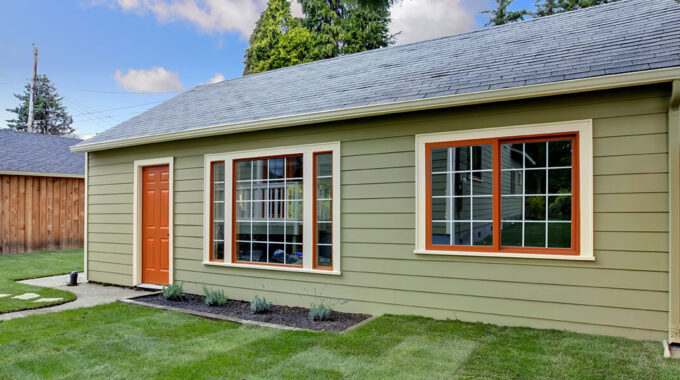Future Outlook: ADU Financing for Investment Properties

By Dan Niemeyer, Vice President
In recent years, Accessory Dwelling Units (ADUs), also commonly known as granny flats or in-law suites, have become increasingly popular investment opportunities for real estate investors. As housing costs continue to rise across the country, ADUs present a flexible and scalable way to generate rental income from existing properties.
According to a study by National Association of Realtors (NAR), ADUs have been on the rise since the pandemic and are growing at a rate of 9%, equivalent to approximately 100,000 new units per year. The demand for properties featuring ADU’s is strong, and in the largest metros, homes with these units are priced at a premium of 35% compared to those without.
For homeowners, ADUs represent an opportunity to boost their income by converting these spaces into rentals or provide a nearby residence for aging family members. However, ADUs are not cheap to build, with average construction costs around $180,000, which translates to approximately $260 per square foot. In this article, we will provide an overview of the ADU financing landscape and how it enables investors to capitalize on these units.
Future Outlook of ADU Financing
The outlook for ADU financing appears to be promising, as ADUs have been touted as part of the answer to the current challenges of housing affordability and inventory. As demand grows, the ADU financing sector is expected to expand, introducing specialized products to cater to the distinct requirements of ADU construction and conversion projects.
Several noteworthy trends to watch for include:
Specialized ADU Loan Products: Both private lenders and traditional banks are likely to introduce tailored ADU loan products, enhancing accessibility and flexibility for homeowners and investors, particularly appealing to real estate investors who recognize the profit potential.
Innovative Financing Structures: Anticipate the emergence of loan products with variable rates, interest-only payments, and reduced upfront costs, all aimed at improving affordability and flexibility.
Construction-to-Permanent Loans: This financing option is likely to become more common, facilitating a seamless transition from the construction phase to long-term rental income, eliminating the need for refinancing.
ADU Advantages
ADUs offer several key advantages that make them a compelling investment strategy in today’s housing market.
High Income Potential: While the cost of adding an income-producing ADU typically ranges from $80k – $150k, it can generate over $15k in annual rental income, offering a relatively short ROI compared to traditional single-family rentals or fix-and-flips. This translates into higher potential yields for investors.
Flexible Financing: ADU financing options, such as second position loans allow investors to capitalize on an existing property without major disruptions or the need to refinance the entire mortgage. This flexibility provides a significant financial advantage.
Risk Diversification: Having two separate rental units, the main home and the ADU, enhances cashflow stability. During market fluctuations or vacancies, one unit an cover the mortgage of the other, thereby insulating investors from downturn risks.
Government-backed Loans and Grants: Some state and city governments offer incentives and programs to promote ADU development, including tax rebates, fee waivers, per-unit subsidies, and loan guarantees through housing agencies. For example, California provides ADU grant programs, offering qualifying homeowners up to $25k towards ADU construction, further sweetening the deal for investors.
ADU Challenges
Despite the attractive opportunities ADUs offer, investors should also carefully evaluate and consider the associated risks and challenges:
Complex Zoning and Permit Requirements: In some markets, local zoning and permit regulations can be complex and restrictive. Investors must conduct thorough research requirements before budgeting for an ADU addition.
Due Diligence: Proper due diligence is crucial to estimate realistic construction costs, rental demand, and ROI projections for the neighborhood to ensure the ADU investment is financially viable.
Property Management Demands: Screening tenant applicants and managing two separate rental units on one property requires additional property management oversight, which investors need to be prepared for.
Financial Exposure: Depending more heavily on rental income exposes investors to financial risk in the event of prolonged vacancies in either rental unit. Having reserves is important to weather any income volatility.
Private Lending and ADU Financing
With the rising popularity of ADUs, private lenders, like CoreVest Finance, have stepped in to address the demand for financing these real estate investment projects. They serve as an attractive alternative for borrowers who may not qualify for traditional bank loans or want faster approvals and terms tailored for ADUs.
Private lenders may also offer loan-to-value ratios surpassing 80%, lower interest rates, and expedited processing times compared to conventional mortgages. Their expertise in the economics of ADU construction and rental properties inclines them to base lending decisions on the anticipated rental income from the ADU, rather than relying solely on the borrower’s income and credit score.
While private lending may involve higher fees and stricter terms, it offers the significant advantage of accessing a broader capital pool.
Bottom Line
ADUs offer real estate investors a high-potential investment avenue with strong rental yields. However, unlocking their full potential often requires specialized financing solutions to support profitable ADU construction or conversions. As the ADU market continues to grow and mature, investors will benefit from the expanding array of tailored financing options for ADUs.
CoreVest Finance stands out as an innovative leader in this space, dedicated to meeting the unique financing needs of ADU investors. By understanding the evolving ADU financing landscape, alongside the associated risks and opportunities, investors can strategically position themselves to capitalize on this growing trend in the real estate market.
CoreVest is a market leader in rental loans, also known as DSCR loans, and has helped thousands of investors finance their properties and improve their holdings. For more information about how CoreVest can help you maximize the value of your rental or investment portfolios, please call Dan Niemeyer at 314.440.4252 or email at [email protected].
Sources:
• National Association of Realtors (NAR). (2023). Trends in ADU Financing: A Comprehensive Report. NAR Research.
• Department of Housing and Urban Development (HUD). (2022). Accessory Dwelling Units: Overview and Benefits. HUD Publications.